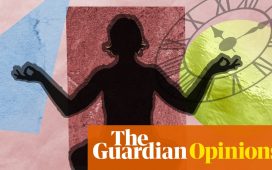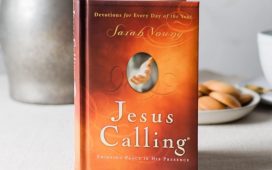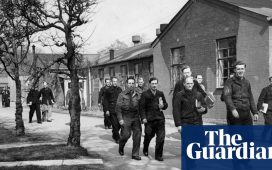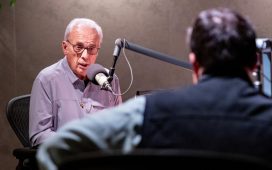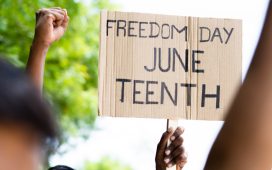In the 18th century an enslaved mixed race woman named Quasheba escaped from a sugar plantation where she was held captive on Barbados.
There are no records of Quasheba’s fate, but the horrific conditions from which she fled in 1783 are well-documented. She is simply recorded in official papers as “run away”.
Other enslaved people on the same plantations killed themselves in the face of violence, punishment and tyranny. People transported from west Africa were forced “under the whip” to harvest canes and carry them to the mills to be crushed and boiled. Many were branded with hot irons.
The sugar estate, known as the Codrington plantations, generated an estimated £5m a year in today’s money and covered 763 acres. It was owned and overseen by the Society for the Propagation of the Gospel in Foreign Parts (SPG), the missionary arm of the Church of England.
The Codrington estate is now one of the focal points in a public debate about the Church of England’s links to chattel slavery, in which people were traded as personal property.
The Observer this weekend reveals evidence found in the archives of Lambeth Palace library of how an archbishop of Canterbury in the 18th century approved funds to buy enslaved people.
Justin Welby, the archbishop of Canterbury, this weekend said it was “particularly painful” to read that a predecessor was involved in buying enslaved people. He said: “While nothing can fully atone for these crimes, we are committed to finding out more, realising this will take many years.”
Robert Beckford, professor of social justice at the University of Winchester, said: “I think there is a lot more in the archives that will reveal the extent to which the Church of England was involved in transatlantic chattel slavery and this was probably just the tip of the iceberg.”
Beckford said a more thorough review was required to quantify the extent of the church’s links. He claimed the Church had previously “distanced” itself from its activities in the SPG, and needed to acknowledge “this difficult part of its history”.
In 1710 Christopher Codrington, a colonial administrator and plantation owner, left on his death a bequest to the SPG of the two plantations in the east of Barbados. His will stipulated they should be maintained and “continued entire with three hundred negros at least kept always thereon” and that the estate should be used for education, with “a convenient number of professors and scholars … all of them to be under the vows of poverty and chastity and obedience.”
Codrington, a former fellow of All Souls College, Oxford, also left a £10,000 bequest to All Souls for a new library. The college has put a memorial plaque at the entrance to the library in memory of those who worked in slavery on the plantations.
Enslaved people on the estate left to the SPG were until at least 1732 branded “society” on the chest with hot irons, to show they were the property of the Church’s missionary arm. One plantation manager was a “particularly vicious” individual, according to a source cited by historian Travis Glasson in his book Mastering Christianity: Missionary Anglicanism and Slavery in the Atlantic World.
Death rates among enslaved people were high. From 1710 to 1838, it is estimated that between 600 and 1,200 lived and died on the plantations. From 1712 to 1761 the SPG purchased at least 450 enslaved Africans.
Rewards were paid for the return of escapees. In August 1725, the plantation paid twelve pounds and six shillings for the return of five “runaway negroes”, according to documents seen by the Observer.
The SPG was overseen by Church of England leaders and the incumbent archbishop of Canterbury would typically serve as its president. On 17 November 1758 Thomas Secker, the then archbishop, chaired a meeting of the SPG and agreed to reimburse funds to the society accounts for “the purchase of new negroes [from Africa] and for the hire of enslaved labour from a third party”.
Secker was told the measures were “calculated for the future lasting advantage of the estates”. It was agreed that £1,093 be paid. Two years later Secker approved another payment of £264 for new enslaved people. A meeting, chaired by Secker on 15 August 1760, recorded the funds were for “the purchase of nine negroes in the beginning of the year”.
Secker’s personal correspondence that year indicates an awareness that the need for new purchases of enslaved people from Africa was connected to the high death rate. He also reflected on their desperate plight. In a 1760 letter to a bishop he wrote: “I have long wondered and lamented that the negroes in our plantations decrease and new supplies become necessary, continuously. Surely this proceeds from some defect, both of humanity and good policy. But we must take things as they are at present.”
Research shows that by 1781 there were 162 enslaved persons who were field workers at Codrington, 73 of them children. Another 60 enslaved persons worked as stock keepers or in other jobs. A list of English manufactured goods shipped to the plantations in 1756 includes four dozen agricultural hoes “very small for children”.
A school for white boys was opened on the estate in 1745, housed in an imposing building with thick limestone walls, and in 1830 Codrington College opened to train candidates for the ministry. It remains there today and is the oldest Anglican college in the Americas. It is managed by the Codrington Trust, established in 1983 and now the estate’s governing body.
after newsletter promotion
The SPG was united in 1965 with the Universities’ Mission to Central Africa, forming what is now known as the United Society Partners in the Gospel (USPG). Justin Welby, the archbishop of Canterbury, is the USPG president, but it is now governed by an independent trustee board.
The church apologised in 2006 for its “involvement in the slave trade” and the operation of the Codrington estate, but faces calls to acknowledge the extent of its role in the plantations in Barbados and agree reparations.
The Church Commissioners, which manages Church assets, has done extensive work on its links to chattel slavery. It published a report last year showing how its £10bn endowment fund was partly linked to Queen Anne’s Bounty, a financial scheme established in 1704 which invested funds in transatlantic chattel slavery.
The USPG apologised for its historic role at the Codrington estate in September last year. In a statement to the Observer, it said it pledged £7m in response to proposals from the Codrington Trust for a renewal and reconciliation project. The apology and investment was criticised for being announced without dialogue and agreement with the Barbados National Task Force on Reparations.
The Church Commissioners has said that questions on the work to address the history of the Codrington plantations are a matter for the USPG. An exhibition on historic links to chattel slavery last year only briefly touched on the plantations, but the Church states on its website there are further documents in the Lambeth Palace library and “we anticipate having more information and artefacts to share in due course”. Officials said the exhibition had been staged in the context of the work on the Queen Anne’s Bounty.
Trevor Prescod, a Barbados MP and chair of the Barbados National Task Force on Reparations, said: “The church was one of the main bodies that justified enslavement of Africans. They can’t escape that responsibility and must right the wrongs.”
The Church Commissioners said: “The Church Commissioners is committed to researching its history and sharing our findings transparently. Some historians contacted us with feedback on the Lambeth Palace library exhibition last year – we are grateful for their feedback and will continue to welcome constructive engagement as we seek to learn and understand more.”
Making reparations
In November 2023, insurance market Lloyd’s of London agreed to invest £52m to promote racial equality in recognition of its “significant role” in the transatlantic slave trade. An independent review by Johns Hopkins University, in Baltimore, found the insurance market was part of “a sophisticated network of financial interests and activities” that made transatlantic slavery possible.
The Scott Trust, which owns the Guardian and Observer, apologised in March last year for the role the founders of the Guardian had in transatlantic slavery. Research commissioned in 2020 found John Edward Taylor, the journalist and cotton merchant who founded the Manchester Guardian in 1821, and at least nine of his 11 backers had links to chattel slavery. The trust said it expected to invest more than £10m during a decade of restorative justice. The Guardian’s journalistic series, Cotton Capital, explores the history of transatlantic slavery and its legacy.
The Bank of England presented new research in an exhibition in 2022 that it had owned 599 enslaved people in the 1770s, after taking possession of two plantations in Grenada.
The National Trust published a report in September 2020 which found that up to a third of its properties had links to colonialism or slavery. It found 29 properties had links to successful claims for compensation after the abolition of slavery. The Slavery Abolition Act (1833) provided for £20m compensation to be paid to the owners of “slave property”.
The brewery and pub chain Greene King, founded in 1799, apologised in June 2020 for its links to chattel slavery. Founder Benjamin Greene owned sugar plantations in the West Indies, where he enslaved people.
